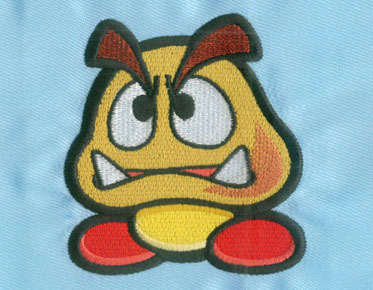Color Theory in Embroidery: Creating Harmonious and Vibrant Designs
Embroidery is an art form that combines thread, fabric, and creativity to produce stunning designs. One of the key elements that can make or break an embroidery project is color. Understanding and applying color theory in embroidery is essential for creating harmonious, vibrant, and visually appealing designs. In this comprehensive guide, we'll explore the principles of color theory and how to use them effectively in your embroidery projects. Whether you're a seasoned embroiderer or just starting, mastering color theory will take your embroidery to the next level.
The Importance of Color in Embroidery
Color plays a pivotal role in embroidery for several reasons:
Visual Impact
● The colors you choose greatly influence how your embroidery design is perceived. The right color combinations can make your design pop and catch the viewer's eye.
Emotion and Mood
● Colors evoke emotions and set the mood of your embroidery. Warm colors like red and orange can convey energy and passion, while cool colors like blue and green can create a calming effect.
Depth and Dimension
● Skillful use of color can give your embroidery a three-dimensional appearance. Shading and blending techniques create depth and realism in your designs.
Design Clarity
● Proper color selection ensures that your design elements are distinct and easily distinguishable. This is especially important in complex or detailed designs.
Personal Expression
● Color choices in embroidery are a form of artistic expression. They allow you to convey your personal style and creativity.
Understanding Color Theory
Color theory is the study of how colors interact and how they can be combined to create pleasing and balanced compositions. It involves three main components:
Hue
● Hue refers to the pure color itself, such as red, blue, or green. In embroidery, you'll be working with thread that comes in various hues.
Saturation
● Saturation, also known as chroma or intensity, refers to the purity and vividness of a color. Desaturated colors are subtle, whereas colors that are highly saturated are vibrant and intense.
Value
● Value refers to how light or dark a color is. In embroidery, you can achieve different values by using different shades of thread within the same hue.
The Color Wheel
A fundamental tool in color theory is the color wheel, which organizes colors in a way that helps you understand their relationships and how they work together. The basic color wheel consists of:
Primary Colors
● Red, blue, and yellow are the primary colors. These colors cannot be created by mixing other colors and serve as the foundation for all other colors.
Secondary Colors
● By combining two primary colors, secondary colors are created. They include green (blue + yellow), orange (red + yellow), and purple (red + blue).
Tertiary Colors
● Tertiary colors are created by combining primary color with a nearby secondary color. For example, red-orange is produced by combining red (primary) and orange (secondary).
Complementary Colors
● Complementary colors are found across from each other on the color wheel. They create strong contrast when placed together. Examples include red and green, blue and orange, and yellow and purple.
Analogous Colors
● Analogous colors are found next to each other on the color wheel and have a similar hue. They create a sense of harmony and are often used for a cohesive look.
Triadic Colors
● Triadic colors are evenly spaced around the color wheel and form an equilateral triangle. Using triadic colors in embroidery can create a dynamic and balanced composition.
Applying Color Theory in Embroidery
Now that we've covered the basics of color theory, let's explore how to apply these principles effectively in your embroidery projects:
Choose a Color Scheme
● Start by selecting a color scheme for your embroidery design. You can opt for complementary colors for high contrast, analogous colors for harmony, or a triadic scheme for variety. Consider the mood and message you are trying to convey.
Consider the Fabric
● The fabric you choose for your embroidery can influence how the colors appear. Test your thread colors on a swatch of the fabric to ensure they work well together.
Thread Selection
● Pay attention to the type of embroidery thread you use. Threads come in various materials, such as cotton, silk, and polyester, each with its own texture and shine. These characteristics can affect how colors are perceived in your design.
Layering and Blending
● To create depth and dimension in your embroidery, use layering and blending techniques. This involves overlapping threads of different colors or shades to achieve a gradual transition between colors.
Contrast for Emphasis
● Use contrast strategically to draw attention to specific elements of your design. Dark colors on a light background or vice versa can make certain details stand out.
Color Placement
● Plan the placement of colors in your design carefully. Consider the focal point of your embroidery and use color to guide the viewer's eye to that area.
Experiment and Practice
● Try out different techniques and color combinations. Keep a color journal or swatch book to record your favorite combinations for future reference.
Tips for Effective Color Usage
To create harmonious and vibrant embroidery designs, keep these tips in mind:
Start with a Limited Palette
● If you're new to color theory, begin with a limited palette of colors. Working with a few well-chosen hues can simplify the design process.
Use Neutral Colors
● Neutral colors like white, black, gray, and beige can balance and complement bolder colors in your embroidery. They can also serve as highlights or background elements.
Consider Cultural Significance
● Be aware that colors can have cultural significance and convey different meanings in various contexts. Research the cultural symbolism of colors if your embroidery has specific cultural or regional themes.
Test Your Colors
● Before starting a large embroidery project, create a color test on a small piece of fabric to ensure the colors work well together and achieve the desired effect.
Trust Your Instincts
● Ultimately, color selection in embroidery is a creative process. Trust your instincts and develop your own sense of color aesthetics over time.
Conclusion
Mastering color theory in embroidery is a journey that can greatly enhance the quality and impact of your designs. By understanding the principles of hue, saturation, and value, as well as the relationships between colors on the color wheel, you'll be equipped to create harmonious, vibrant, and visually captivating embroidery projects. Whether you're embroidering intricate patterns, monograms, or decorative motifs, thoughtful color choices will elevate your embroidery to an art form that resonates with viewers and conveys your artistic vision effectively. So, embrace the world of color in embroidery and let your creativity flourish in every stitch. Happy embroidering!



